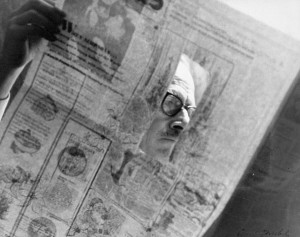Not even during the second half of 20th-century America, when owning a print-media organ was tantamount to a license to mint money, did we see a brief, shining moment when native advertising was considered so unseemly that it simply couldn’t be done. Oh, it was done. Today’s foundering news industry’s penchant for more and bigger advertorials is merely a deeper embrace of a practice that’s always been.
From Matt Novak’s Paleofuture riposte to John Oliver’s very funny piece about the separation of church and state:
“One of the most interesting articles on the history of advertisements disguised as news is probably Linda Lawson’s 1988 paper, ‘Advertisements Masquerading as News in Turn-of-the-Century American Periodicals.’
Lawson explains just how prevalent advertorials were over a century ago. Back then they were called ‘reading notices:’
One such marketing technique was the reading notice. Assuming that people would be more likely to read news stories and editorials than display advertisements, businesses began writing advertisements in the form of news copy. Newspaper and magazine editors agreed to print them for money.
Lawson cites over a dozen specific cases of advertising content appearing as editorial at the turn of the 20th century, and meticulously documents the many fights over the ethics involved. Newspapers would openly solicit companies for paid advertising designed to look like straight news, demanding much higher rates than traditional ads. Lawson even describes an instance in 1886 when the New York Times asked for and received $1,200 from the Bell Telephone Company in exchange for positive coverage.
Not long after this minor scandal at the Times, New York’s newspaper of record became the harshest critic of accepting money for editorial coverage.”
Tags: John Oliver, Linda Lawson, Matt Novak

